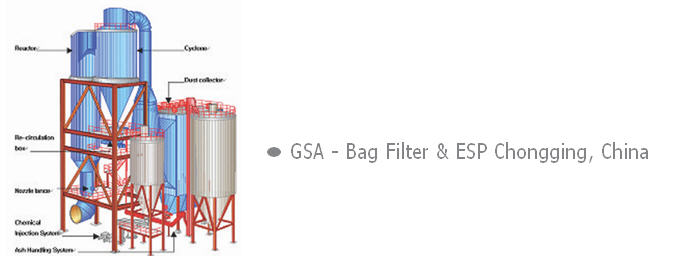Languages
GSA Technology

GSA Technology (Fluidized Technique)
In a GSA system, dust particles from flue gas, reaction products, and alkaline chemicals fed into the system and floating inside the reactor. They get in contact with flue gas to remove various pollutants with high efficiency.
The dust concentration inside the GSA system reactor is 50 to 100 times higher compared to conventional reactors. The surface of each dust particle is coated with alkaline chemicals which are injected into the reactor either in the form of a slurry or solid. The coated dust particles come into contact with acidic pollutants such as SOx, HF and HCl to neutralize and remove them.
The next step is the cyclone, where most of the dust is removed. Dust is completely removed by the ESP or Bag Filter later in the process so that only clean air is released into the atmosphere.

The reaction products and dust captured in the cyclone are recycled to the reactor and used as an absorbent. This means lower operating costs due to the reuse of alkaline chemicals. The GSA system can be run at minimal cost according to the target discharge rate if it is linked up to an acid gas monitoring system.





